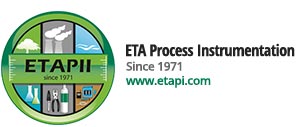Steam Boiler Facts:
Critical to the operation of the plant, steam boilers monitor water quality and are very expensive to replace if not maintained correctly. Steam boilers prevent:
- Tube fouling impacting efficiency and performance
- Corrosion reducing the life expectancy of boilers, creating unsafe working conditions
- Poor control of condensate leads to wasted water, chemicals and efficiency when excessive blowdowns results from poor water chemistry
Monitoring Water Quality to Optimize Boiler Performance – Using pH, DO, and Conductivity
Tubes are an important component of steam boilers: boiler water pH is normally kept alkaline in order to facilitate formation of a thin oxide layer on the tubes, this layer then acts as a protective barrier preventing corrosion. Both sodium phosphate and sodium hydroxide are used to promote this oxide formation, but too much of these chemicals cause problems. To prevent these issues, monitoring pH accurately can help. Designed to work in low ionic activity liquid found in boiler water, is M4 Knick’s SE 558 pH electrode.
Significantly impacting the life- span of a boiler is oxygen, due to its ability to cause pitting and corrosion even at trace (ppb) concentrations. Steam boilers mostly use chemicals like hydrazine as an oxygen scavenger to prevent this; the SE 707 will easily monitor into the ppb range of dissolved oxygen, ensuring the levels of hydrazine are adequate to prevent any damaging effects.
Conductivity measurement is one tool used to identify when contaminants are becoming concentrated in boiler water. This can result from overdosing of chemicals or a break in a tube; when conductivity levels become too high, blow down of the boiler may be needed, or an inspection to see if there is a failure in the steam system. M4 Knick’s SE 604 can operate in very low conductivities such as those found in typical boiler water systems.
Since connection to the analytical sensor is typically not submersible, manufacturers will often “pot” the cable into the sensor, forcing the customer to completely disconnect cables from the transmitter when exchanging sensors. Avoiding this entirely, M4 Knick uses Memosens sensor connections that are inductive and able to be connected even when completely submersed.
When using the Memosens smart digital technology all calibrations can be done in an analyzer shop or lab. When customers wish to replace a sensor, they simply take a pre-calibrated sensor to the field and do a quick swap, disconnecting the inductive Memosens cable, then connecting the new sensor. Calibration information is automatically shared with the system, and ready to measure!
Customer’s Return on Investment
- Maintenance Time and Cost Reduction: Using M4 Knick Memosens sensors and transmitters, allowed the customer to greatly reduce the need for calibrations and frequent sensor replacements. Fewer trips to recalibrate or replace electrodes resulting in reduced maintenance and sensor costs.
- Built for Wet Environments: M4 Knick sensors inductive connections and sealed transmitter design allows systems to operate in very wet locations without worry of corrosion of metal components, and damage to exposed circuit boards. The M4 Knick transmitter also comes with a three year warranty.
Links to products:
ph: SE 558
Conductivity: SE 604
Dissolved Oxygen: SE 707
Transmitter: Stratos Evo
see also:



